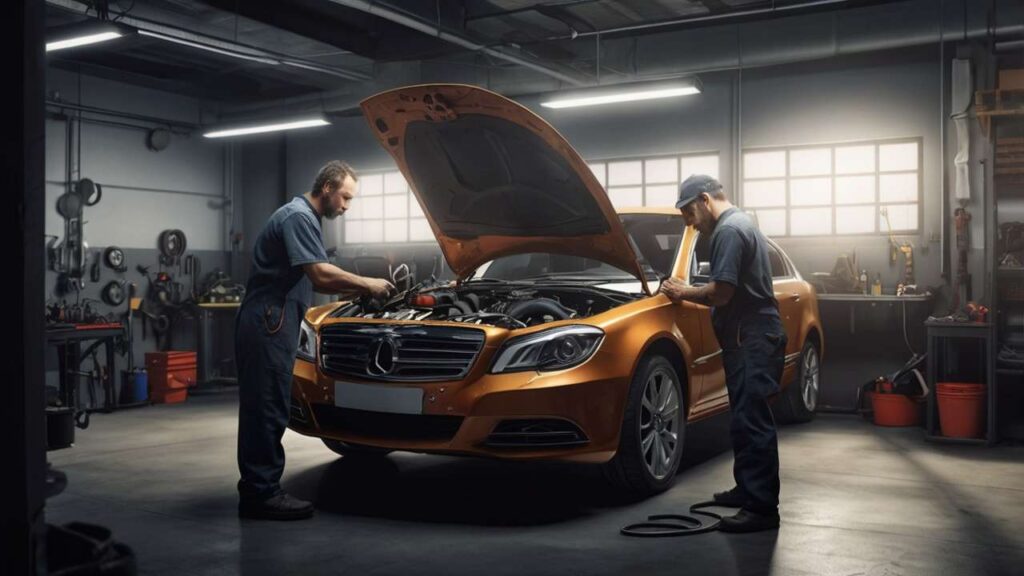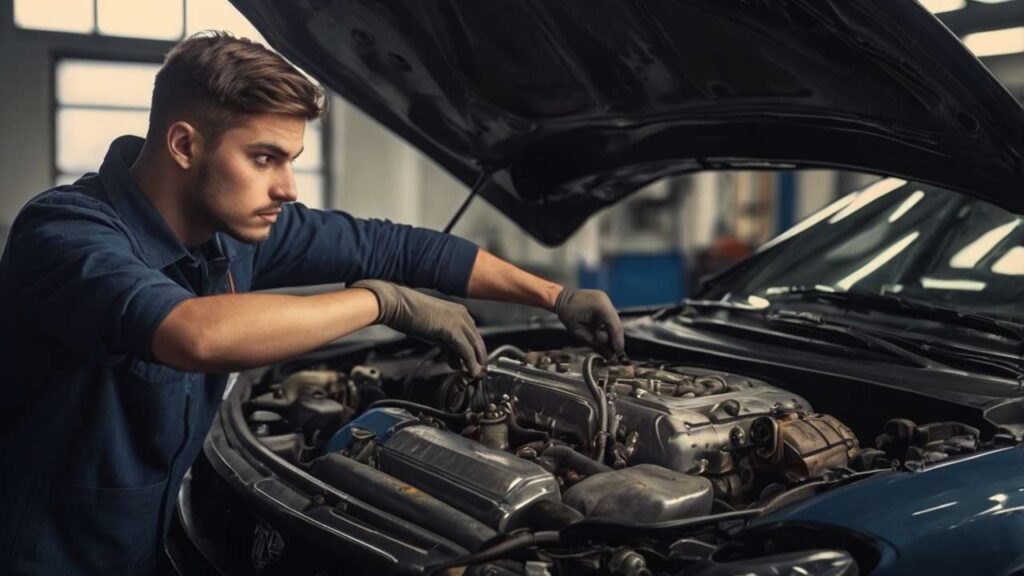There’s nothing more frustrating than hearing an unusual noise under the hood, smelling burnt oil, or seeing that dreaded check engine light flicker on. For many drivers, it feels like engines are unpredictable beasts, breaking down without warning. But most issues aren’t random—they’re part of patterns professionals see every day. In fact, Solving the most common engine problems—oil leaks, overheating, and electrical issues—make up the bulk of repair shop visits across North Carolina and beyond.
I’ve had my share of these headaches. My old Honda once developed a small engine oil leak that I ignored for weeks, thinking it wasn’t serious. That mistake cost me almost double because the leaking oil eventually damaged nearby parts. Looking back, I wish I’d known that engine oil leak repair is simpler and cheaper when handled early. And I’m not the only one. Mechanics often say, “The longer a driver waits, the louder the repair bill screams.”
Oil Leaks: Small Drops, Big Trouble
Oil leaks are like slow poison to your car. They don’t always show up as a dramatic puddle under the vehicle; sometimes it’s just a faint smell or a few drops that leave faint stains on the driveway. Drivers often mistake it for nothing, but the reality is that oil lubricates the engine’s moving parts. Lose too much of it, and the engine starts eating itself alive.
Professional repair specialists usually begin by inspecting valve cover gaskets, oil pans, and crankshaft seals—the most common leak points. Tools like UV dye kits and pressure testers are used to trace the source. A reliable technician won’t just top off your oil and send you away. They’ll explain whether the issue is a small gasket replacement or a bigger repair involving seals deep in the engine block.
One expert from Top-Notch Engine Repair Specialists in North Carolina noted: “Catching leaks early is crucial because the oil not only lubricates but also helps cool the engine. Without it, friction skyrockets, and major components wear down fast.”
And here’s a little DIY tip—if you see coolant leak symptoms (like sweet-smelling steam or a greenish puddle), don’t confuse it with oil. Both are serious, but coolant leaks are usually tied to overheating, not lubrication.
Overheating: The Silent Killer of Engines
If oil leaks are slow poison, overheating is a heart attack. It often comes without warning, and if ignored, the engine could seize completely. I’ll admit, I once kept driving a car that was running hot because I “just needed to get home.” That decision cracked the cylinder head. Lesson learned.
Common car overheating causes include radiator leaks, broken water pumps, clogged coolant lines, or faulty thermostats. Professionals will pressure test the cooling system, inspect hoses, and often check for radiator leak fix opportunities before suggesting a replacement.
Cooling fans are another overlooked culprit. If the fan motor fails or the relay burns out, the coolant won’t circulate effectively. As one seasoned mechanic told me: “Engines don’t just overheat randomly. There’s always a root cause—usually something that looked too small to matter.”
Drivers can perform simple checks too—monitor coolant levels, look for dried coolant residue around the radiator, and pay attention to unusual temperature spikes. It’s not glamorous, but it can save you thousands.
For those who want to dive deeper, check out Engine Warning Signs Every Driver Must Recognize. Recognizing overheating symptoms early could be the difference between a $150 repair and a $3,000 rebuild.
Electrical Issues: The Invisible Enemy
Unlike leaks or overheating, electrical faults hide in plain sight. You can’t always see them, but you’ll feel their effects—intermittent stalling, lights dimming, starter failures, or even false dashboard warnings.
Diagnosing an engine electrical fault requires more than guesswork. Professional shops rely on multimeters, OBD-II scanners, and sometimes oscilloscopes to trace irregular signals. Common culprits include alternator failures, corroded wiring, or bad sensors.
What makes electrical issues dangerous is how they mask other problems. A weak battery connection can mimic a failing alternator. A faulty sensor can trigger a check engine light without any mechanical issue at all. This is why accurate diagnostics are critical. As the guide Decoding the Check Engine Light: Essential Diagnostic Tools and Methods for Modern Vehicle Repair explains, modern cars rely heavily on electronics, and blind part-swapping rarely works.
Preventative Engine Maintenance and Vehicle Safety Inspections
Most of these common problems—oil leaks, overheating, electrical issues—could be avoided or minimized with regular care. Preventive engine maintenance isn’t exciting, but it’s far cheaper than breakdowns.
Simple steps like replacing fluids on schedule, inspecting hoses, and scheduling annual vehicle safety inspections make a world of difference. Even DIY car checks—looking under the hood for dried coolant stains, checking oil dipsticks, or testing your battery terminals—can alert you to trouble before it escalates.
There’s also the financial side. The article Maintenance vs. Breakdown: The Financial Case for Consistent Engine Care and Service Schedules puts it bluntly: paying $80 for an oil change is better than $4,000 for an engine replacement.
Real-Life Case Study: From Breakdown to Breakthrough
A customer story that stuck with me came from a family in Raleigh. Their SUV overheated on the highway during a summer road trip. They assumed it was just a “hot day” problem and kept driving. By the time they pulled over, the radiator had burst, and coolant was everywhere. The repair shop confirmed the overheating had warped the engine head.
Instead of panicking, the family worked with a trusted specialist who offered reconditioned parts as a middle ground—cheaper than brand-new OEM but more reliable than aftermarket. The repair took a week, but the car came back running strong. It’s a perfect example of how Choosing Between OEM, Aftermarket, and Reconditioned for Your Engine Repair isn’t just a theoretical debate—it affects real wallets and real families.
Expanding Beyond the Basics
While oil leaks, overheating, and electrical issues dominate today’s conversation, the field of engine care is far broader. For future insights, readers should look into hybrid and electric engine maintenance, which brings a whole new layer of complexity. Another growing topic is sustainable disposal of engine fluids and parts—a concern for eco-conscious drivers. There’s also increasing interest in remote diagnostics where mechanics can monitor vehicle health digitally, saving time before you even set foot in a shop.
Each of these connects back to the bigger theme: engines are evolving, but so are the solutions. And whether it’s a breakdown or just a weird sound you can’t explain, having a reliable professional in your corner makes all the difference.
For more resources, check out Pro Service Tips Engine Repair Hub where detailed guides and professional insights are regularly updated.
Engine Problems FAQs
1. How serious is a small engine oil leak?
Even small leaks are serious. They reduce lubrication, overheat components, and can spread damage if ignored. Always get them checked early.
2. What’s the quickest DIY check for overheating?
Pop the hood and look at your coolant reservoir. If it’s low, that’s a red flag. Also, check for steam, sweet smells, or dried residue around the radiator.
3. Can electrical issues really cause the engine to stall?
Yes. Faulty wiring or a bad alternator can cut power to vital components, making the car stall without mechanical damage. Proper diagnostics are essential.
Engines don’t fail out of nowhere. The **3 most common engine problems—oil leaks, overheating, and electrical issues—**are predictable and preventable if you know what to look for. By understanding early symptoms, investing in preventative engine maintenance, and trusting reliable professionals, drivers can avoid unnecessary breakdowns and expenses.
If this article helped you, don’t keep it to yourself. Use the share buttons below to spread these insights with your network. Your friend’s car might thank you later.


